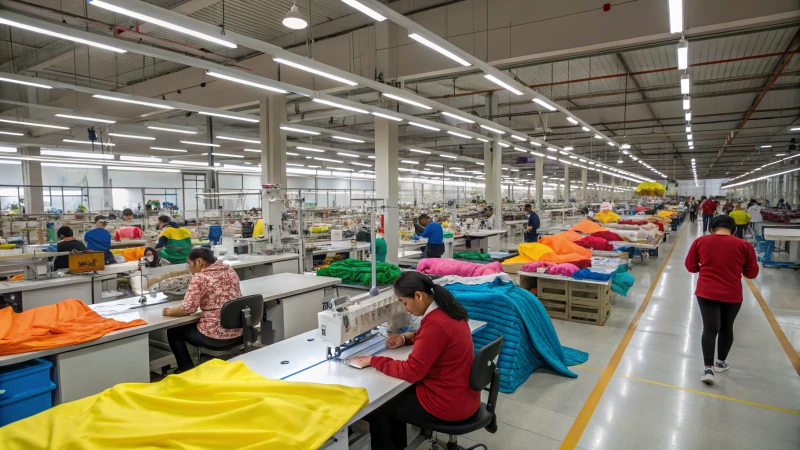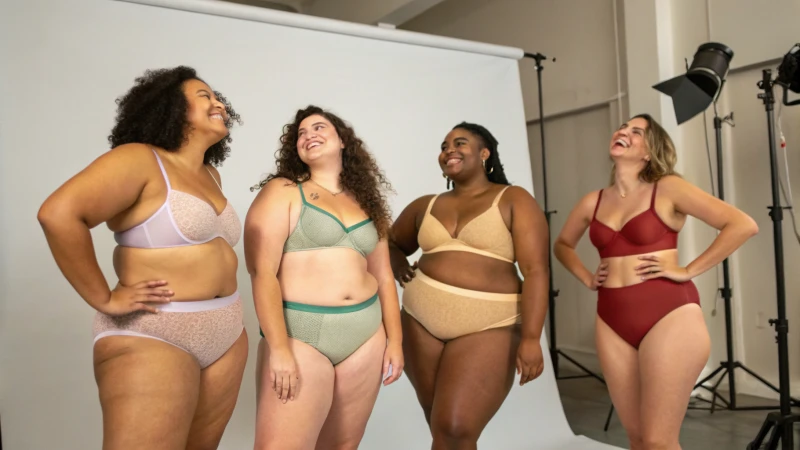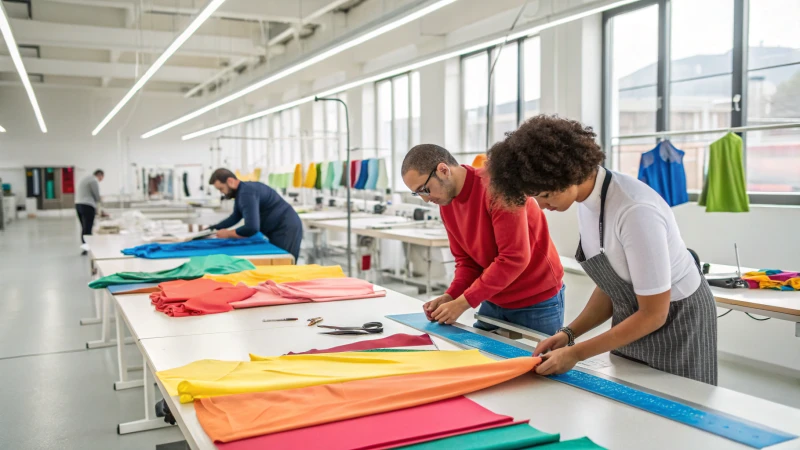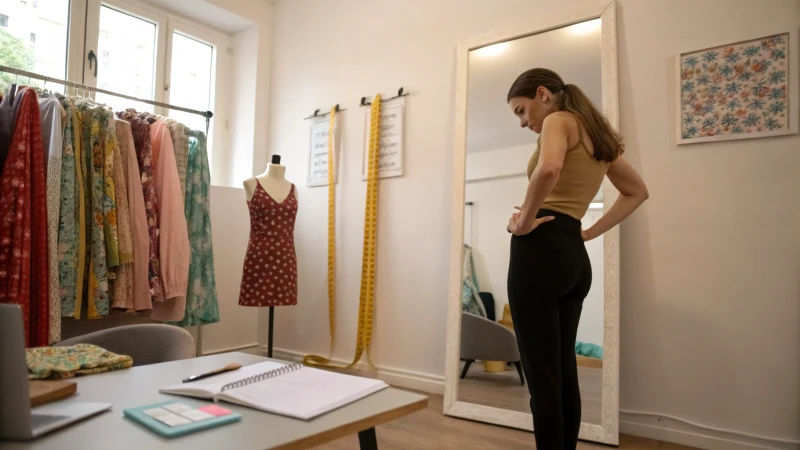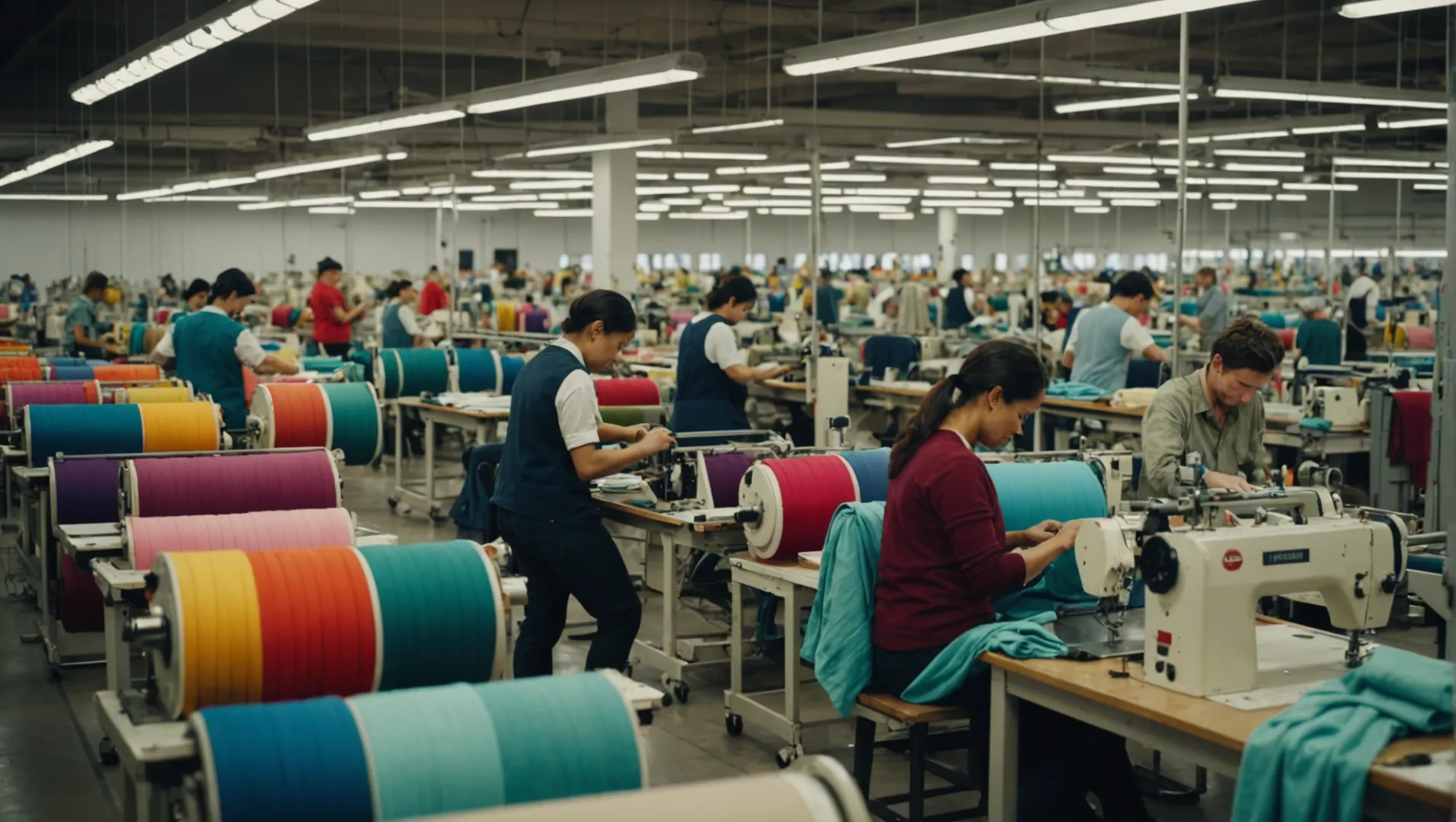
Embarking on a journey in the clothing industry can feel overwhelming, but understanding garment manufacturing services can lighten the load.
Garment manufacturing services operate by offering a range of solutions from initial design and development, through sampling and production, to final delivery. These services include custom design, fabric sourcing, pattern making, mass production, and private labeling.
But hold on! While this overview gives you a glimpse, diving deeper into each stage will unveil the crucial role these services play in bringing your fashion dreams to reality. Let's explore!
Fabric sourcing impacts garment quality and cost.True
Choosing the right fabric affects durability, aesthetics, and production cost.
What Are the Key Stages in Garment Manufacturing?
Understanding the stages of garment manufacturing is crucial for anyone entering the fashion industry.
The key stages in garment manufacturing include design and development, fabric sourcing, pattern making, sampling, production, and quality control. Each stage plays a vital role in ensuring the final product meets design specifications and quality standards.

Design and Development
The first stage in garment manufacturing is design and development1. This involves creating initial sketches or digital designs that reflect the client's vision. Designers work closely with clients to ensure that every detail is captured before proceeding to the next step. This stage is critical as it sets the foundation for all subsequent processes.
Fabric Sourcing
Fabric sourcing is a meticulous process where manufacturers help clients select appropriate materials that match the design and functional needs of the garment. Considerations include texture, durability, color, and cost-effectiveness. Sourcing high-quality fabric ensures the garment's longevity and aesthetic appeal.
Pattern Making and Grading
In this stage, precise patterns are created based on the garment's design. Pattern making involves drafting the shapes of each piece of the garment, while grading adjusts these patterns to fit different sizes. This step requires high precision to ensure that every size maintains the intended design proportions.
Sampling
Sampling involves creating a prototype of the garment to test the design and fit before mass production. This stage allows for adjustments and improvements based on client feedback. It's a crucial checkpoint to identify any design flaws or issues with fabric choice, ensuring that the final production run meets expectations.
Production
Once the sample is approved, production begins. During this phase, garments are manufactured in bulk according to the specifications laid out in the earlier stages. Efficient production lines and skilled workers ensure that timelines are met while maintaining quality standards.
Quality Control
Quality control checks occur throughout the manufacturing process but intensify during and after production. Each garment is inspected for defects, consistency, and adherence to design specifications. This stage is essential to uphold brand reputation and customer satisfaction.
Exploring these stages further reveals how each contributes to producing high-quality garments efficiently. Understanding these processes helps businesses leverage economies of scale2 and ensure their products stand out in a competitive market.
Design and development is the final stage in garment manufacturing.False
Design and development is the first stage, not the final one.
Pattern making involves creating shapes for each garment piece.True
Pattern making drafts each piece's shape for assembly.
How Do Custom Design and Development Services Work?
Are you curious about how custom design and development services transform your fashion ideas into tangible garments?
Custom design and development services involve creating unique garment designs based on client input, which are then transformed into prototypes for approval before mass production. These services ensure that each design is tailored to the client's specifications, from fabric selection to pattern creation.
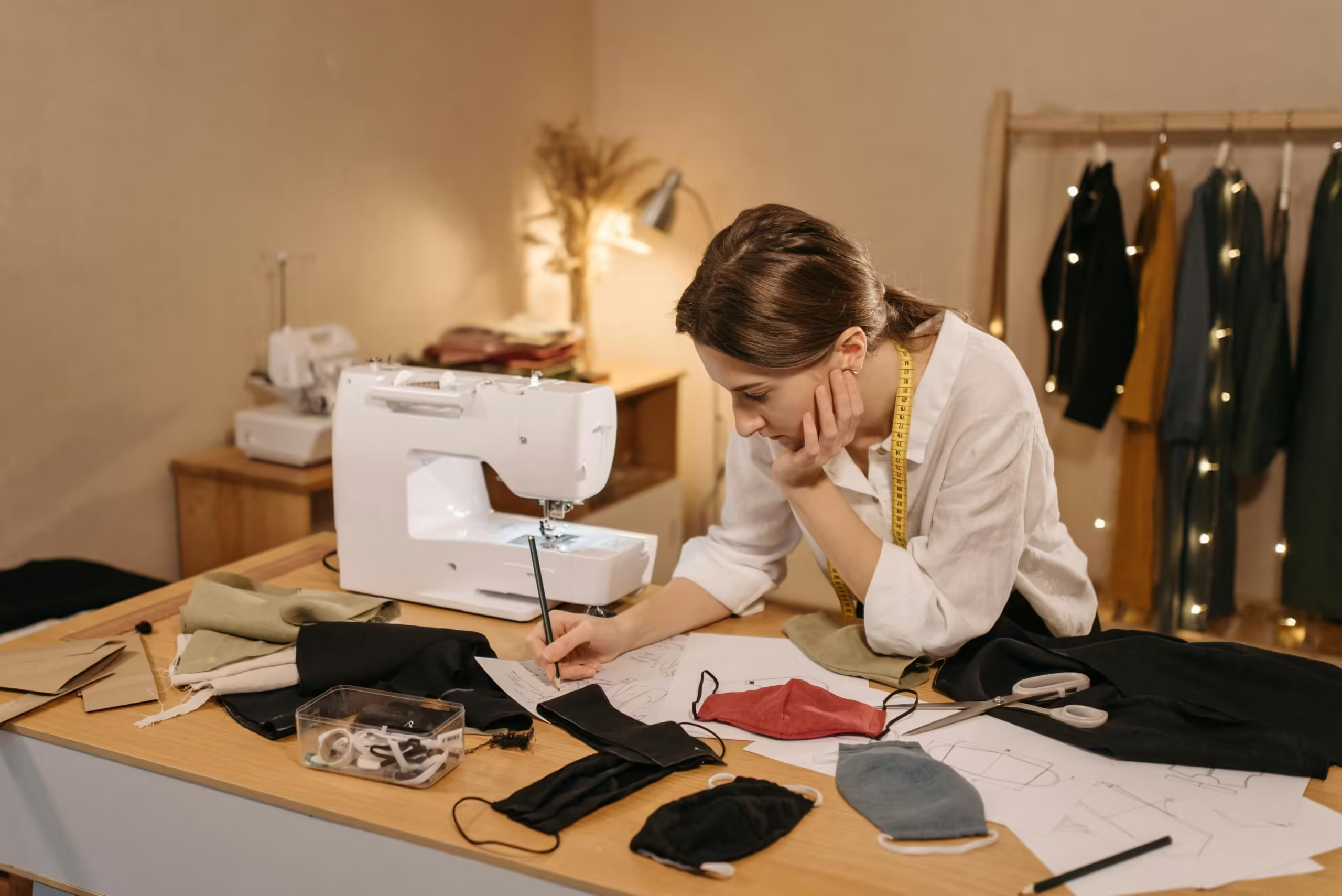
Understanding Custom Design Services
Custom design services begin with a conceptualization phase3 where designers collaborate closely with clients to understand their vision, target market, and brand identity. This phase often involves sketches, mood boards, and detailed discussions to ensure alignment with the client's expectations.
Table: Steps in Custom Design Process
| Step | Description |
|---|---|
| Idea Generation | Brainstorming sessions to outline the initial design concept. |
| Sketch Development | Creation of detailed sketches and digital illustrations. |
| Client Feedback | Review and refine designs based on client feedback. |
| Final Design | Approval of the finalized design ready for prototype development. |
The Role of Development Services
Once a design is finalized, the development phase kicks in. This involves creating prototype garments, also known as samples, which are crucial for testing fit, fabric behavior, and overall aesthetic appeal. This stage often includes pattern making4 and grading, which ensure that the garment can be produced in various sizes without compromising the design integrity.
Key Elements of Development Services:
- Pattern Making: Crafting templates for garment pieces that will be assembled during production.
- Grading: Adjusting the pattern to create different sizes while maintaining design proportions.
- Sampling: Producing a prototype garment to evaluate the design's practical application.
Why Custom Design and Development Matter
Custom design and development services are essential for brands seeking to stand out in a competitive market. These services enable brands to offer exclusive styles that resonate with their audience, ultimately fostering brand loyalty and differentiation. By engaging in custom development5, brands can ensure quality control from the initial design stage through to final production, thus maintaining a high standard across their product lines.
Custom design services start with client collaboration.True
Designers work closely with clients to understand their vision.
Prototypes are made after the final design approval.True
Prototypes are developed to test fit and fabric behavior.
Why Is Fabric Sourcing Crucial in Garment Production?
Fabric sourcing plays a pivotal role in garment production, influencing quality, cost, and sustainability.
Fabric sourcing is crucial in garment production as it determines the quality, cost-effectiveness, and sustainability of the final product. Choosing the right fabric impacts not only the aesthetic appeal but also the durability and functionality of the garment.
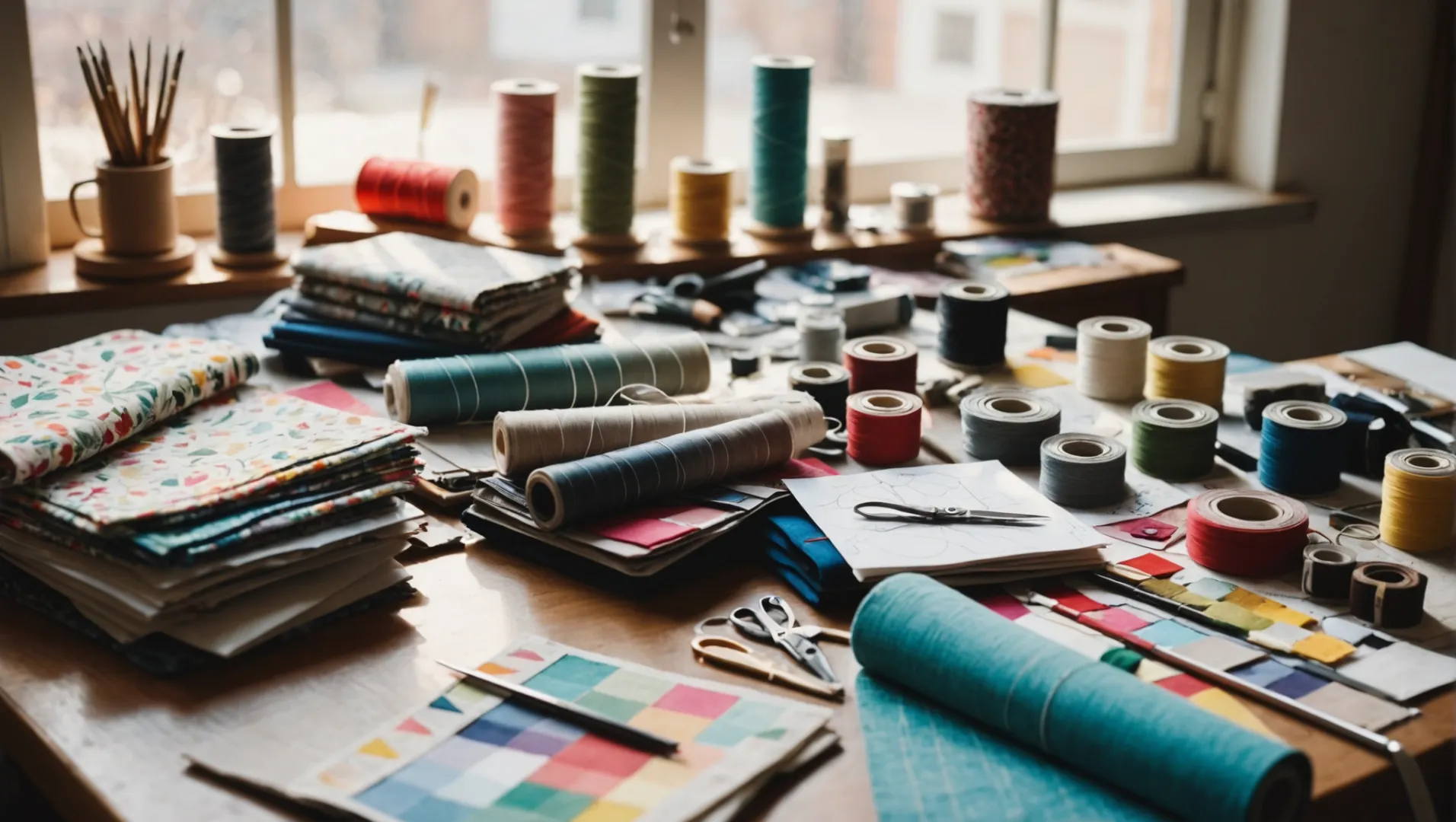
The Role of Fabric in Defining Quality
The choice of fabric directly impacts a garment's quality, affecting its texture, comfort, and longevity. High-quality fabrics like Egyptian cotton or silk can elevate a garment's perceived value, while poor-quality fabrics may lead to issues like shrinkage or color fading.
Selecting appropriate fabrics is essential for designers aiming to create garments that meet both aesthetic and practical demands. For instance, activewear requires fabrics with moisture-wicking properties, while winter clothing demands materials that provide insulation. Understanding these nuances is vital for producing garments that satisfy consumer expectations.
Cost Implications of Fabric Sourcing
Fabric costs often account for a significant portion of the overall production expense. Efficient fabric sourcing can lead to cost savings, which is crucial for maintaining competitive pricing in the fashion industry. Bulk purchasing and negotiating with suppliers can help reduce costs, but it requires expertise and a deep understanding of the market.
Manufacturers often rely on experienced sourcing agents6 who have established relationships with fabric suppliers. These agents can secure better deals and ensure a steady supply chain, which is essential for meeting production deadlines.
Sustainability and Ethical Considerations
Sustainability has become a cornerstone in modern fashion, with consumers increasingly demanding eco-friendly options. Fabric sourcing plays a critical role in addressing these concerns. Choosing organic or recycled materials can significantly reduce a garment's environmental footprint.
Moreover, ethical sourcing involves ensuring that fabrics are produced under fair labor conditions. Manufacturers must be diligent in selecting suppliers who comply with labor laws and environmental standards, reinforcing their commitment to sustainable fashion practices.
Incorporating sustainable fabrics not only appeals to eco-conscious consumers but also aligns with global trends towards greener production methods. Companies like Patagonia7 exemplify successful integration of sustainability into their fabric sourcing strategy.
Fabric sourcing impacts garment sustainability.True
Choosing eco-friendly fabrics reduces environmental impact.
Poor fabric choice has no effect on garment quality.False
Low-quality fabrics can cause shrinkage and fading.
How Do Manufacturers Ensure Quality Control in Production?
Quality control is crucial in manufacturing, ensuring that each product meets specific standards before reaching consumers.
Manufacturers ensure quality control through systematic inspections, testing, and adherence to established standards at every production stage. By employing trained quality inspectors and utilizing advanced technology, they maintain consistency and identify defects early.
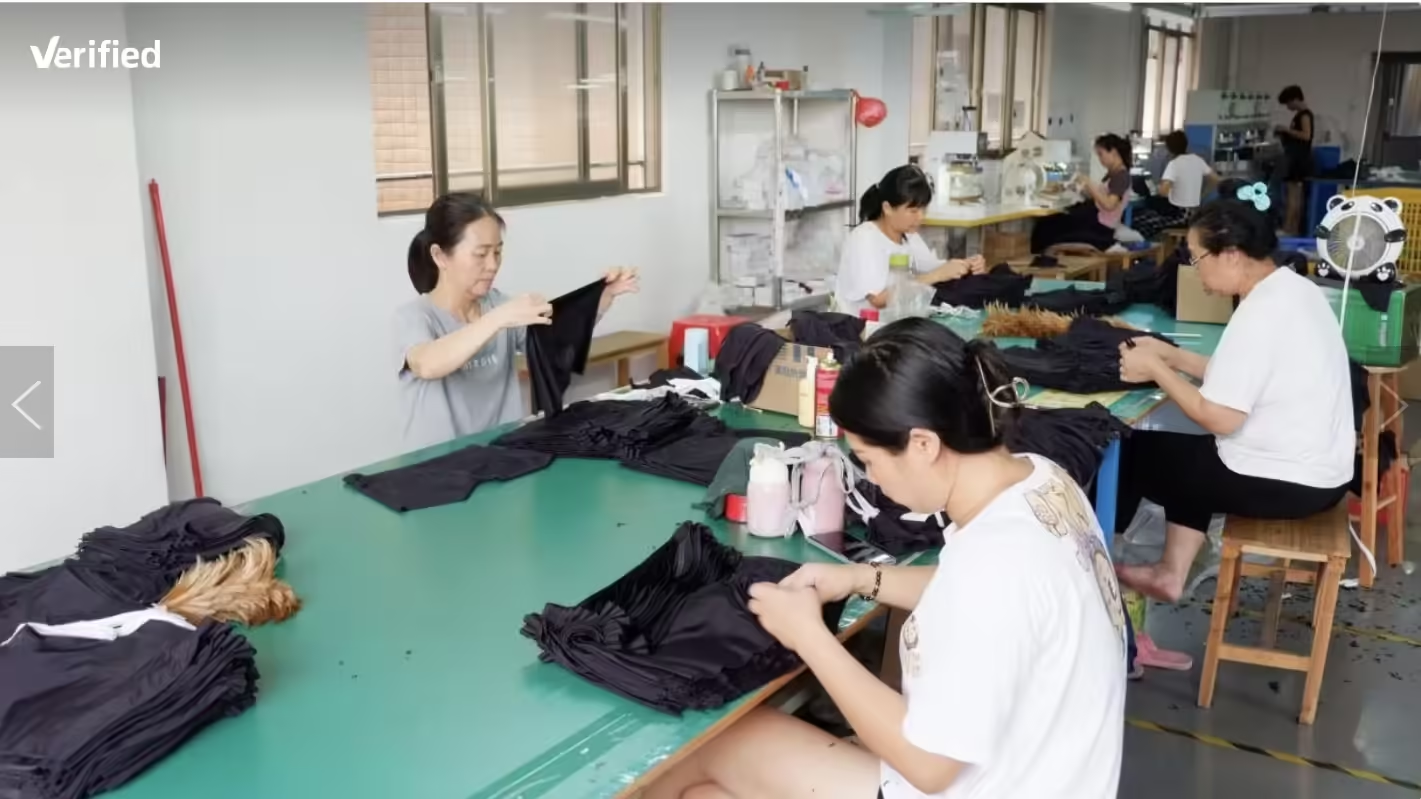
Systematic Inspections
Manufacturers implement rigorous inspection protocols at various stages of production. This includes incoming material checks, in-process evaluations, and final product assessments. These inspections are crucial for identifying potential defects early, reducing waste, and ensuring high-quality output.
Adherence to Standards
Quality control relies heavily on adherence to industry standards and regulations. Manufacturers follow guidelines like ISO 9001, which provide a framework for quality management systems. By adhering to these standards, they ensure consistency and reliability across all products.
Testing and Verification
Testing is an integral part of quality control. This involves various tests such as durability, performance, and safety checks to confirm that products meet predetermined criteria. Advanced technologies like automated testing equipment enhance accuracy and efficiency.
| Testing Type | Purpose | Examples |
|---|---|---|
| Durability Testing | Ensures product longevity | Wear and tear tests |
| Performance Testing | Verifies operational functionality | Efficiency evaluations |
| Safety Testing | Confirms compliance with safety norms | Toxicity assessments |
Utilizing Technology
Manufacturers increasingly use technology to streamline quality control processes. Advanced tools like AI-driven analytics and machine learning can predict defects and optimize production lines. Implementing technology-driven quality control systems8 enhances precision and reduces human error.
Training and Development
Ongoing training for quality inspectors ensures that they are equipped with the latest knowledge and skills needed for effective quality control. Manufacturers also conduct regular workshops and seminars to keep staff updated on new techniques and technologies.
By integrating these practices, manufacturers not only ensure product excellence but also build trust with their customers.
Manufacturers use AI for quality control inspections.True
AI-driven analytics help predict defects and optimize production lines.
Quality inspectors are not trained in new technologies.False
Ongoing training keeps inspectors updated on new techniques and technologies.
Conclusion
By grasping the nuances of garment manufacturing, you can streamline your business operations and elevate your product quality.
Discover how initial designs shape the manufacturing process.: The steps in the Garment Development Process include: · Concept · Customer Identity · Ideate · Fashion Design · Technical Design · Sourcing · Sampling. ↩
Learn how bulk production reduces costs.: Specific functional changes each contribute to a new scale advantage: flexible products, reduced costs, simplified manufacturing processes, realistic planning ... ↩
Discover how designers transform ideas into fashion concepts.: A fashion concept is a collection of ideas that will influence the type of garments you will be promoting as a freelance fashion designer or fashion house. ↩
Learn why pattern making is vital for garment production.: Increased efficiency: Patterns can help to streamline the garment manufacturing process by reducing the amount of time and fabric that is wasted ... ↩
Explore advantages of tailored design processes for brands.: 5 Benefits Of Having Custom Made Clothing | Why Tailored Clothes Are Awesome · 1. You Get A Better Fit · 2. Quality Materials Are Used · 3. You Can ... ↩
Learn how sourcing agents secure better fabric deals and ensure supply.: Not only does their experience provide credibility, but they also have long-lasting relationships with suppliers, so great service can be expected from the ... ↩
Discover how Patagonia integrates sustainability into its fabric choices.: Responsible Purchasing Practices are a company's commitment to establishing and implementing policies that consider the needs of both the brand and supplier. ↩
Explore how technology enhances precision in quality control processes.: AI is revolutionizing quality inspections by allowing for more accurate and efficient defect detection. ↩



